Housing and Transportation
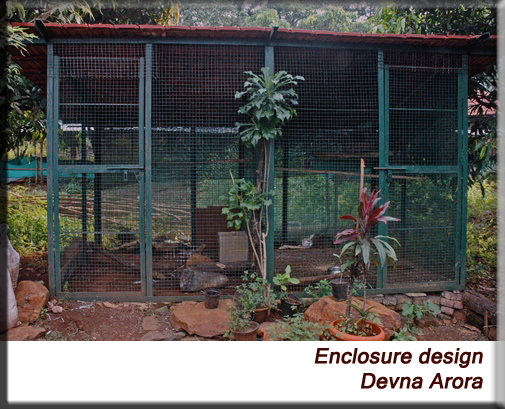
Essentially, housing must provide for the following basic needs of each animal with the respective species in concern.
1. Shelter from the elements
2. Safety and security
3. Habitat enrichment
4. Housing closely related species together
5. Minimizes contact with anthropogenic factors
6. Clean and hygienic
7. Adequately spacious
Shelter from the elements
Shelter requirements vary greatly according to the age and species in concern. As a general rule, all newborn animals are housed indoors until weaning. They need utmost warmth and protection at this which is easier to provide and monitor indoors. Although older babies may be brought out in the sun for a while each day, they are shifted to suitable outdoor enclosures upon weaning. Babies at this stage are older, capable of thermoregulation and require more space to run about.
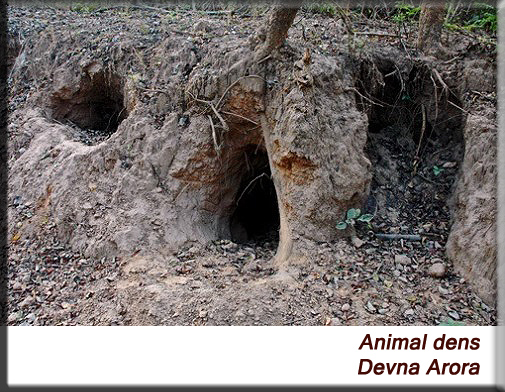
An enclosure must be adequately sheltered from the elements and should ideally provide a view to the natural world around the animals. Every animal must have access to a hide (a nest box, den or cavity) to take shelter from harsh weathers. Sub-adult animals that are getting ready for release may be allowed to weather fairly rough climatic conditions so as to accustom them to the severities of the wild, but they too must always have a hide or shade to retreat in.
Even though adequately sheltered, every enclosure must provide ample opportunity for basking. Preferably, there should be gradients of light and shade that offer ample exposure to the sun yet sufficient opportunities to move into partial shade or complete shade.
Safety and security
An enclosure must serve two purposes in terms of safety:
1. Prevent the animal from escaping
2. Prevent entry of other dangerous animals
Even with the best of care given, it is natural for a wild animal to attempt to escape. Although it is an encouraging sign that demonstrates the preservation of the animal’s instincts, many might not be adequately ready for release, i.e., survival in the wild. Accidental or premature release of such animals may only lead to their eventual death. Every care must be taken that the animal cannot push, squeeze, gnaw or burrow its way out. The enclosures must be secure and checked regularly. For burrowing animals, the wire mesh or fence must extend at least a meter under the ground on all sides.
While every care needs to be taken to prevent the escape of an animal, just as much care needs to be taken to prevent the entry of predators into the enclosures. Small animals are greatly threatened by snakes and rodents who can get in through smaller holes. Enclosures for such animals are often made of closer mesh spacing to prevent the entry of any animal that may threaten the existence of the animal in your care.
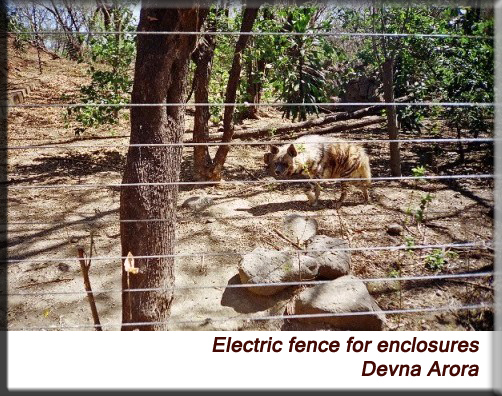
There are many ways to fence an enclosure. Apart from conventional barriers (fences, wire mesh, barbed wire, bricked or concrete walls), moats and electric fences too are popular for enclosing large enclosures for bigger mammals, especially those that will remain in care for prolonged durations. Such designs allow maximum visibility of the animals and only affect the aesthetic view of the enclosures minimally. With a little regular maintenance, electric fences (especially when solar powered) have proven to be a cheaper, reliable and a preferable option for many enclosures.
Please also refer to our pages on
Care and
Hand-raising
for more information.
Habitat enrichment
It is essential to simulate an enclosure design that is closest to the animal’s natural environment and allows the animal to engage in activities that it would normally perform in nature. This not only keeps their natural instincts intact but also provides them with the opportunities to display and enhance their natural behaviors. Encouraging such behaviors also enhances the chances of survival after release.
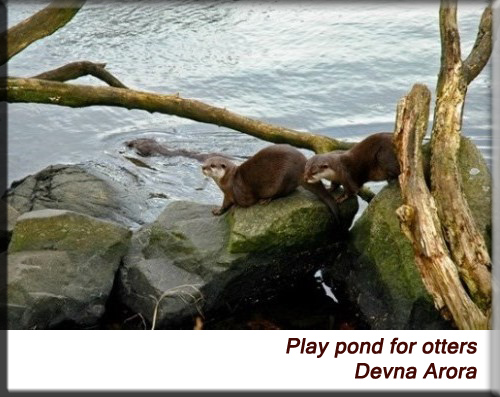
Ensure there are trees and many other things that arboreal animals can climb on. Birds must have suitable perches, made of natural wood, to settle on. Provide bird baths – birds not only enjoy them but it also helps keep them clean. For animals that have an affinity to water, ensure there is a clean pond for them to waddle or swim in. The pond must always only be sufficiently shallow/deep with gently sloping ends so that the animals can easily climb out.
Arboreal animals, for instance, must always be fed at a height. It is unnatural for most arboreal animals to descend for food. Most of their needs are met on the tree itself and descending from the tree can expose them to grave risks as they are often clumsy on foot. Accustoming such animals to be fed at ground levels will only make them forgo their natural instincts and put them in compromising situations where they can’t outrun a terrestrial predator for instance.

Please refer to our pages on
Nutritional basics for feeding enrichment and
Rehabilitation
for more information.
Housing closely related species together
Different species occupy a different niche in nature. This may be expressed in terms of food, habitat or climatic needs and preferences. Species within the same family will often have similar needs yet exploit different enough resources, preventing direct competition.
Species that can exist close together in nature and do not excessively or directly hamper the other species interests may be housed together in large enclosures. [This is often easier with younger animals as they are less likely to be aggressive towards each other.] This not only has the advantage of exposing the animals to a more natural setting and increased interaction with other species but also helps by sharing of enclosures during a space crunch.
Please refer to our page on
Care
for more information.
Minimizes contact with anthropogenic factors
It is always a good idea to cover enclosures in human vicinities with green mesh tarps, or some natural colored material that will provide some separation from the human movement. This is essential to minimize habituation. Enclosures close to kitchens or other high movement areas within centers must also be covered.
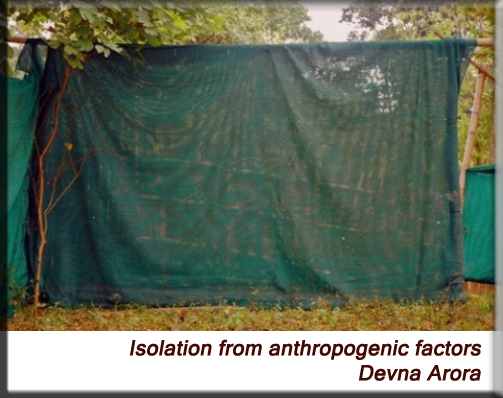
Every enclosure must have a retiring room (be it a den, cave, nest box, tree cavity, etc.) for the animal to take refuge in moments of stress. Some animals may be extremely shy and may prefer to hide even when approached briefly for their daily rounds of food and water. They must not be forced to accept human presence but allowed to take refuge.
Clean and hygienic
Animals periodically shift nests and dens or extend regular denning sites by burrowing, etc. Animal movements from one place to another also prevent them from staying in any one place for too long, thereby preventing the accumulation of body wastes. Animals that have permanent residences often use separate feeding, birthing and defecation places away from their retiring zones. Different species have evolved different hygiene mechanisms to prevent the buildup of bacteria and other harmful organisms.
Animals in captivity lose the opportunity to do so. Their space is constricted and they are required to eat, sleep and eliminate body wastes in close quarters. Often this leads to a buildup of bacteria over time. Adequate hygiene practices must be in place to ensure hygienic conditions in the enclosures. Water must also always be offered clean and fresh to prevent the onset of water-borne infections.
Adequately spacious
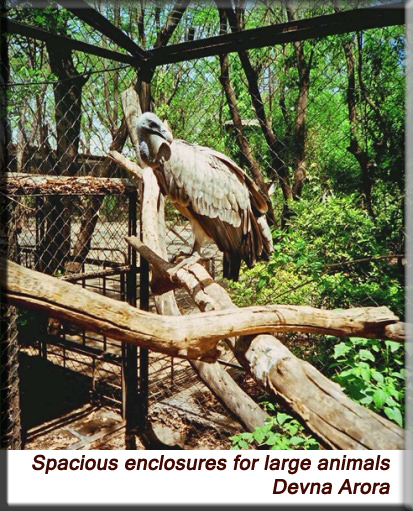
Although the size (height and width) of the enclosure will be dictated by the requirements of the species in concern, the enclosure must be large enough to allow free movement and maintenance of health yet small enough for you to be able to keep an eye on the animal. Recently admitted, injured or sick animals that require frequent monitoring and handling must be placed in smaller and more accessible shelters. Housing them in larger shelters will only lead to longer chase at the time of handling and result in greater stress for the animal.
Young animals that are not ready to be housed outdoors, may be housed in smaller crates and allowed periodic and supervised access to larger areas. This will assist their transition to the new enclosure.
Appropriate for rehab
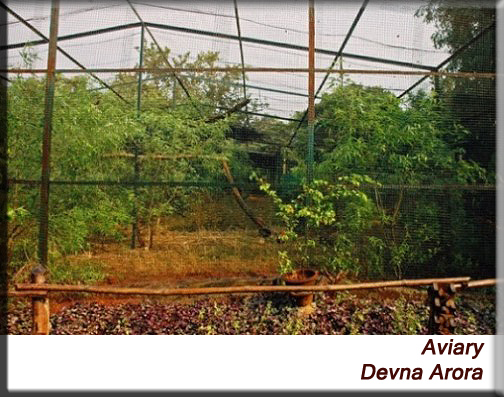
Animals undergoing rehabilitation must have access to large spaces that permit free movement and the expression of their natural behaviors. This is essential to attain optimum body condition before release. Large aviaries and rehab enclosure must be available to all animals prior to release.
Please refer to our page on
Rehabilitation of Wild Animals
for more information.
Other considerations when housing wild animals
Quarantine
Quarantine is the procedure of isolating an animal that either carries or is suspected to carry an infectious disease. Since most diseases are infectious at an early stage but only diagnosed after physical symptoms are apparent, all new animals are treated as potential carriers and quarantined for a minimum of 15 days or until the disease has been cured. All feeding, handling, etc. of animals under quarantine is performed separately with dedicated keepers for each zone. Your veterinarian would be able to give you more specific guidelines on the quarantine of individual animals.
A significant part of animal rescue and rehabilitation involves not only dealing with disadvantaged animals that are orphaned or displaced but also those that are either injured or sick. Even healthy animals that have been in compromised circumstances for prolonged periods of time may harbor various infections. Oftentimes, we get so engrossed in the care of these animals that quarantine procedures fall low on the list of priorities. Yet, it is a vital practice that must be followed diligently for the safety of the other animals in your care.
Infectious diseases, especially those that are air-borne, can easily spread to other animals. Young and weaker animals are especially vulnerable to such diseases. Rehabilitation being a lengthy process, animals may often spend many weeks or months at rehab centers during which several other disadvantaged animals may be admitted to the same facility. It is unnecessary to expose healthy and stable animals to threats each time a new animal is admitted, and new entrances must therefore always be quarantined before allowing them in close vicinity of stable and healthy animals.
It is also helpful to divide the center into two categories:
Long-term admissions – which are typically orphaned animals that will stay at the center for long durations until they are independent.
Quick releases – which are typically sub-adult or adult animals with minor injuries that can be released in short timespans.
All others, esp. orphans that will be shifted to the long-term care zone, must be shifted there after being quarantined.
Transporting wild animals
Handling and transportation, especially on long journeys, can be a very traumatic experience for the animal. Stress during transportation can be caused due to many factors including noise, unfamiliar and unnatural surroundings, increased human contact, cramped space and excessive heat. Even though transportation may be inevitable, stress can be minimized significantly.
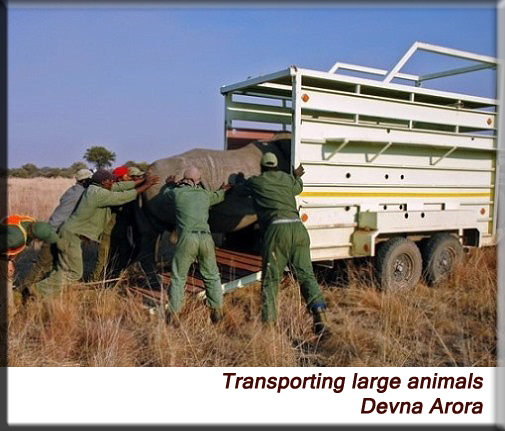
Animals must be kept in dark quiet crates during transport. Transport crates may be cushioned on the insides if necessary. The use of rough flooring is extremely helpful in giving the animal a better grip and preventing it from slipping. Long journeys may be undertaken at night, if required, to minimize heat stress especially in the summer months.
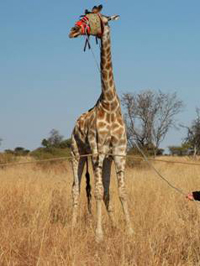
Simple measures like the use of blindfolds, ear muffs, etc. can significantly reduce external stimuli and thereby the anxiety caused. Horns may be tubed if transporting many ungulates together in the same crate. Often, animals may be sedated or tranquilized during transit but this may only be done by experienced veterinarians.
Please refer to our page on
Strayed Animals
for more information.
Squeeze cages
Although any serious intervention may warrant sedation, there may be times when an animal may have to be restrained without sedation. A squeeze cage can be an excellent option for larger mammals, especially carnivores, at such times.
Pet crates and cages
As they are specially designed for the purpose, pet crates are an excellent option for transporting smaller animals. The only drawback is that they are not available in larger sizes for bigger animals.
Baskets
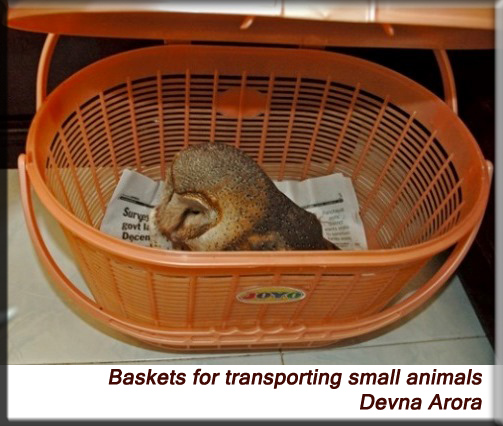
Baskets are exceptionally handy when transporting small animals. They are not only a lot more affordable and readily available but also permit transportation with ease. Baskets can also be used to house injured birds, small mammals and reptiles temporarily. If seclusion is required, the basket may simply be covered with a large towel or blanket.
Cardboard boxes
You may often have to rush to the rescue of a small animal without being adequately prepared. Borrowing a cardboard box at such times, which is easily available anywhere, can help you transport the animal to a more secure location. Ensure to secure it firmly before travelling. Some holes may also be punched in the box for adequate circulation during travel.
Snake bags
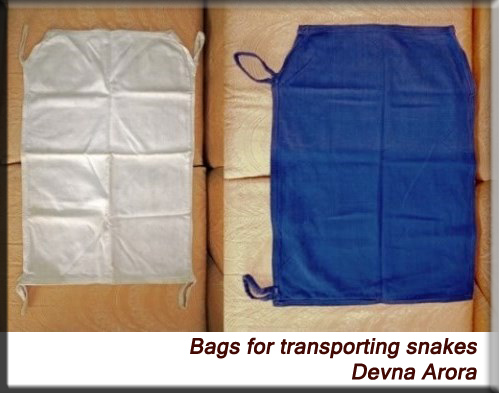
Although most rescuers resort to inverted pillow cases or jute bags in an emergency, it is advisable to have a few snake bags ready for use. A snake bag is quite simply a breathable cotton bag (preferably dark colored) with a few external loops on the outside of the bag. The external loops, which are 2-3 inches in length, allow easy handling of the bag without the risk of being bitten by a venomous species when touching the bag directly. All rough edges (which may be neatly sewed) must be on the outside of the bag – the bag must be smooth on the inside.
Snake bags are often the preferred carriers for transporting snakes after rescue. They are easy and comfortable to carry and transport both for the snake and the handler. In summer months, the bag may be lightly sprinkled with water to maintain the temperature during transport and prevent the snake from overheating although the bag must never be placed in direct sunlight if a snake is in it.
N.B. A snake must not be kept in a bag for over a couple of hours – bags are only designed for temporary transit. If it must be brought to captivity for any reason, the snake must be shifted to an appropriate crate or enclosure.
Useful links
Adams, K.M. (2009) Environmental enrichment for non-human primates
http://www.uta.edu/ra/oric/animal/forms/AnimalSubject/Enrichment%
20Resources%20for%20Non%20Huma.pdf
Download pdf
Bonal et al. (2011) Protocols for the transport of wild animals
http://moef.nic.in/downloads/public-information/protocol-transport-wild-animals.pdf
Download pdf
CZA - Barrier designs for zoos
http://www.zoolex.org/publication/gupta/gupta_barrier_design.pdf
Dow, S. (2007) Designing an enclosure
http://www.biaza.org.uk/uploads/Research/Resources%20documents
%20for%20projects/Enclosuredesign.pdf
Download pdf
Kulpa-Eddy et al. (2005) USDA Perspective on environmental enrichment for animals
http://dels-old.nas.edu/ilar_n/ilarjournal/46_2/pdfs/v4602kulpa-eddy.pdf
Download pdf
Mallapur et al. (2002) Enclosure design and space utilization by Indian leopards (Panthera pardus) in four zoos in Southern India
http://209.190.249.61/assets/library/105_522.pdf
Download pdf
Plowman, A. (undated) A keeper’s guide to evaluating environmental enrichment
http://www.biaza.org.uk/uploads/Committees/RC/Research%20
Guidelines/EvaluatEnrichment.pdf
Download pdf





